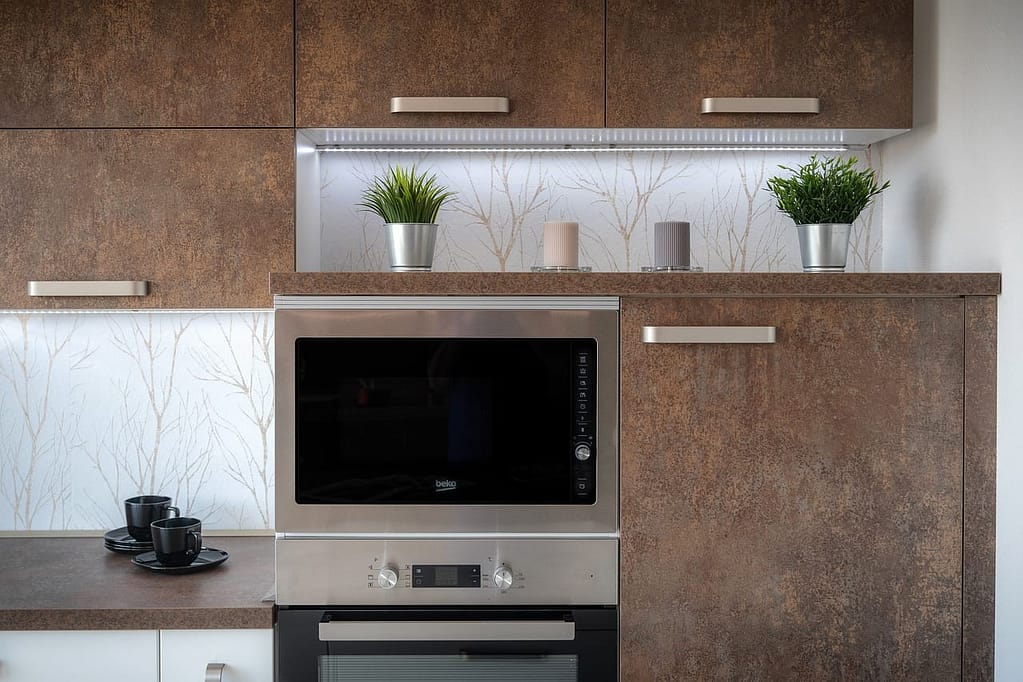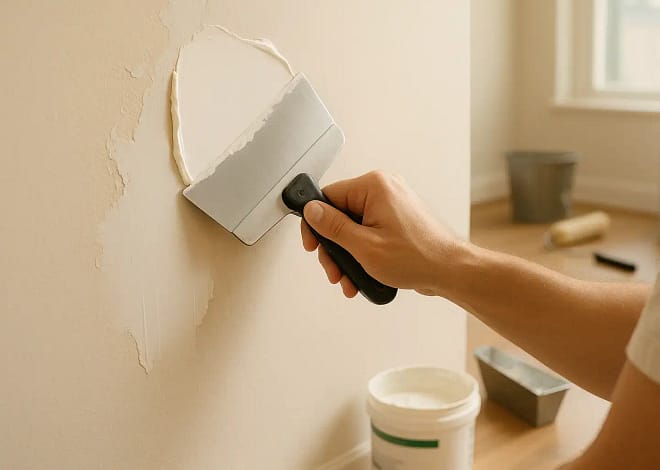
Why Leathered Granite Might Be Your Perfect Countertop Match
Introduction:
Picture this: You walk into a kitchen that stops you in your tracks. The countertops aren’t just beautiful—they’re intriguing. They have this rich, earthy texture that makes you want to run your fingers over them, like the worn leather of a favorite jacket. That’s the magic of leathered granite, my friends.
I first discovered this stunning finish while helping a cousin plan her kitchen renovation. She insisted on “something different,” and when the slabs of black leathered granite arrived, I finally got it. Unlike the glossy, high-shine countertops we’re all used to, this had depth, warmth, and a subtle ruggedness that felt both modern and timeless.
But here’s the thing: leathered granite isn’t just a pretty face. Over the years, I’ve learned so much about why it’s become a go-to choice for designers and homeowners alike—and why it might be perfect for your next project, too. In this guide, I’ll break down everything you need to know, from what leathered granite actually is (spoiler: it’s not actually covered in leather!) to how to keep it looking flawless for years.
We’ll tackle the big questions: Is it more expensive? Can you polish it later if you change your mind? And how do you clean something with a textured surface without ruining it? Plus, I’ll gush about my personal favorite—black leathered granite—and why it’s a game-changer for adding drama to any space.
1. What is Leathered Granite?
Let’s start with the basics: leathered granite is not granite covered in actual leather (though I totally get why the name might make you think that!). Instead, it’s all about the texture. Imagine running your hand over a piece of suede or the soft grain of a well-loved leather sofa—that’s the vibe this finish delivers.
I remember being skeptical at first. “How can stone feel soft?” I wondered. But when I touched my cousin’s leathered granite countertops during her kitchen reveal, it clicked. The process involves brushing the granite slab with diamond-tipped tools to create a slightly textured, matte surface. Unlike polished granite (which is glossy and reflective) or honed granite (smooth but flat), leathered granite has a tactile quality that adds depth and character.
Why does this matter?
– The textured finish helps hide smudges, water spots, and fingerprints—a lifesaver in busy kitchens!
– It retains the stone’s natural color variations but tones down the “bling” of polished stone, giving it a more understated, organic look.
– Despite its rugged appearance, it’s still as durable as traditional granite. (No, the texture doesn’t make it “weaker”—it’s just as tough!)
Designers love it for its versatility. Whether you’re going for a modern farmhouse, industrial loft, or cozy rustic aesthetic, leathered granite blends right in. And if you’re worried it’ll feel “rough,” don’t—it’s smooth to the touch but with just enough grip to keep plates and glasses from sliding around.
Fun fact: Black leathered granite is having a major moment right now, and it’s easy to see why. The dark hue paired with that subtle texture feels luxe but approachable—like the James Bond of countertops.
2. Why Choose Leathered Granite Countertops?

Okay, let’s get real: countertops are the workhorses of your kitchen or bathroom. They need to look good and handle daily chaos—think spilled coffee, rogue avocado pits, and hot pans tossed down in a hurry. So why should leathered granite make the cut? Let me tell you why I’m a fan.
The Practical Perks
1. Hides Imperfections Like a Pro
Remember how polished granite shows every water spot, fingerprint, or crumb? Leathered granite is the chill, low-maintenance sibling. That textured surface disguises smudges and spills effortlessly. I tested this myself during a cookie-baking marathon—flour dust? Vanished. Red wine splatter? Barely noticeable. It’s a game-changer for messy cooks (or anyone with kids).
2. Durability That Won’t Quit
Don’t let the soft texture fool you. Leathered granite is just as tough as polished stone. The leathering process enhances its resistance to scratches and etches. My friend’s leathered island has survived everything from knife slips to her toddler “helping” chop strawberries. Years later, it still looks brand new.
3. No More Slippery Surfaces
That slight texture gives it a gentle grip. Plates and bowls won’t slide around like they’re on a hockey rink. I’ve hosted enough dinner parties to appreciate this—no more heart attacks when someone gestures wildly with a wineglass!
The Aesthetic Appeal
– Warmth Meets Modern Edge
Leathered granite bridges the gap between rustic charm and contemporary design. It adds depth without being overly shiny, making it perfect for cozy farmhouses and sleek urban lofts. Pair it with brass fixtures for a luxe vibe or reclaimed wood for cabin-inspired warmth.
– Color That Pops (Subtly)
The matte finish lets the stone’s natural veining and hues shine without the glare. My cousin’s black leathered granite, for example, has these gorgeous gray undertones that shift with the light. It’s like the countertop has its own mood ring!
Where It Shines
– Kitchens: Ideal for busy households (spills? What spills?).
– Bathrooms: Resists water spots and toothpaste splatter.
– Outdoor Bars: Holds up against weather and UV rays.
My Take?
I used to think polished granite was the only “luxe” option—until I lived with leathered counters. They’re forgiving, functional, and full of personality. Plus, they age beautifully, developing a patina that feels lived-in (in the best way).
3. Is Leathered Granite More Expensive?
Let’s address the elephant in the room: “Does this unique finish cost an arm and a leg?” The short answer? It depends. But let me break it down so you’re not left guessing.
Leathered vs. Polished: The Price Showdown
I’ll never forget my neighbor’s reaction when she priced out leathered granite for her kitchen. “Wait, it’s how much?!” she gasped. Here’s the scoop:
– Leathered granite typically costs 5–15% more than polished granite. Why?
– The leathering process requires specialized tools and skilled labor.
– It’s less common than polished finishes, so some suppliers charge a premium.
– Honed granite (matte but smooth) is usually priced similarly to leathered, but it lacks that coveted texture.
But don’t panic! I’ve seen plenty of projects where leathered granite came in under polished stone. It all comes down to the slab’s rarity, thickness, and even the color. For example, black leathered granite is widely available, which can keep costs down.
What Drives Up the Cost?
– Exotic Stone Choices: If you’re eyeing a rare Brazilian granite, expect to pay more—no matter the finish.
– Thicker Slabs: 3cm vs. 2cm slabs add to the price (and weight!).
– Custom Edges: Fancy edges like waterfall or chiseled bevels increase labor costs.
Is It Worth the Splurge?
Here’s my take: If you’re already budgeting for natural stone countertops, leathered granite is a smart upgrade. Think of it like opting for a leather interior in a car—it’s a small bump in price for a big boost in longevity and style.
A friend of mine went with polished granite to save money, only to regret it when her white countertops started showing coffee rings and knife scratches. Meanwhile, my leathered counters still look pristine after three years of meal prep chaos.
Pro Tip: Ask your fabricator for “remnant slabs.” They’re smaller pieces left over from bigger jobs, often sold at a discount. Perfect for bathroom vanities or kitchen islands!
4. How to Clean Leathered Granite
Let’s be honest: even the most stunning countertop loses its charm if it’s high-maintenance. The good news? Leathered granite is surprisingly easy to care for—if you know the right tricks. Here’s my tried-and-true routine, honed after years of living with these counters.
The Daily Cleanup
1. Soap + Water = MVP
For everyday messes (crumbs, spills, sticky fingers), warm water and a drop of mild dish soap are your best friends. I keep a spray bottle mixed with water and a squirt of Castile soap under my sink—it’s gentle and smells like lavender.
2. Microfiber Magic
Grab a soft microfiber cloth to wipe down the surface. Avoid abrasive sponges or paper towels—they won’t damage the stone, but they can trap debris in the textured finish.
3. Dry It Off
Leathered granite’s texture means water can pool in tiny crevices. After cleaning, give it a quick dry with a clean cloth to prevent streaks or mineral deposits.
Tackling Stains
– Oil or Grease: Sprinkle baking soda on the stain, let it sit for 10 minutes, then gently scrub with a soft-bristle brush. Rinse and dry.
– Wine or Coffee: Mix equal parts water and isopropyl alcohol, spray, and wipe. No need to panic—I’ve tested this after many morning espresso mishaps!
What Not to Do
– Skip Harsh Chemicals: Bleach, ammonia, or acidic cleaners (like vinegar or lemon juice) can dull the finish over time.
– Avoid Steam Cleaners: The heat and moisture can seep into the stone’s pores.
– Don’t Over-Seal: Leathered granite is naturally less porous than polished, so sealing once a year is plenty. (I mark my calendar every January—it takes 10 minutes!)
Pro Tip: If you’re a “set it and forget it” person, invest in a pH-neutral granite cleaner. I keep a bottle next to my sink for lazy days—it’s foolproof.
5. Can You Polish Leathered Granite?
Here’s the truth: You can polish leathered granite… but you probably shouldn’t. Let me explain why.
Picture this: A few years ago, a client of mine (let’s call her Sarah) fell in love with the texture of leathered granite but worried it might feel “too rustic” long-term. Fast-forward two years, she asked her contractor, “Can we just polish it to make it shiny?” The answer? Technically yes, but here’s the catch:
What Happens If You Polish Leathered Granite?
– The leathering process is physical, not chemical. Those diamond-tipped brushes create tiny peaks and valleys in the stone’s surface to give it that matte, textured feel.
– Polishing grinds down those peaks, smoothing the surface into a glossy finish. But here’s the kicker: you’ll lose the unique texture forever. It’s like turning a cozy flannel shirt into a satin blouse—it’s just not the same vibe.
Sarah decided to test a small corner of her countertop. The polished spot looked… fine. But it lacked the depth and character of the original finish. Worse, the polished area now showed every water spot and fingerprint, while the rest of the counter hid them effortlessly. She ended up regretting it and replaced the slab entirely.
So What’s the Alternative?
If you’re craving a glossy finish down the road:
1. Replace the Slab: Not ideal, but it guarantees the look you want.
2. Embrace the Honed Finish: Some fabricators can smooth the surface to a flat matte (honed) finish, but it still won’t be shiny.
3. Add a Glass Countertop Layer: A pricy but creative workaround for shine without losing the leathered base.
My Advice?
If you love the leathered look, commit to it! Its charm lies in that tactile, organic texture. But if you’re on the fence, go with polished or honed granite instead. Trying to “fix” leathered granite later is like trying to un-bake a cake—it’s messy and rarely satisfying.
6. Black Leathered Granite: A Timeless Choice
Let’s talk about the crème de la crème of countertops: black leathered granite. If leathered granite is the James Bond of stones, the black variety is Bond in a tuxedo—sleek, sophisticated, and effortlessly cool.
I’ll admit, I’m biased. The first time I saw black leathered granite in person—at a boutique coffee shop downtown—I literally stopped mid-sentence. The countertops were moody, almost velvety, with subtle flecks of gray and silver that caught the light like stardust. It was love at first sight.
Why Designers Obsess Over It
– Versatility: Black leathered granite pairs with everything. White cabinets? Check. Warm wood tones? Absolutely. Bold emerald-green backsplash? Oh yes. It’s the neutral that somehow feels daring.
– Timeless Drama: Unlike glossy black countertops (which can feel sterile), the leathered finish adds warmth and dimension. It’s like a little black dress with texture—elevated but never boring.
– Hides Flaws Like a Pro: Remember those pesky water spots and crumbs? Black granite laughs in their face. My friend’s kitchen island in black leathered granite looks spotless even after her kids’ pancake-making marathons.
How to Style It
– Modern Edge: Pair it with stainless steel appliances, minimalist hardware, and concrete floors for an industrial vibe.
– Rustic Warmth: Combine it with reclaimed wood shelves, copper accents, and terracotta pots for a cozy farmhouse feel.
– Luxe Glam: Add gold fixtures, marble backsplash, and a crystal chandelier. Instant Old Hollywood vibes!
My Favorite Use?
Outdoor kitchens. Black leathered granite holds up against sun, rain, and BBQ sauce splatters. Plus, it looks stunning under string lights at night—like a moody, modern patio masterpiece.
Is It Too Dark?
I’ve heard this worry a lot. “Won’t it make my small kitchen feel like a cave?” Not if you balance it! Add under-cabinet lighting, reflective surfaces (like a mirrored backsplash), or open shelving to keep the space airy.
Conclusion:
So, there you have it—the lowdown on leathered granite, straight from someone who’s obsessed with its texture, practicality, and sheer good looks. Whether you’re renovating a kitchen, upgrading a bathroom, or dreaming of an outdoor entertaining space, leathered granite countertops are a choice that blends durability with undeniable style.
Let’s recap the highlights:
– It’s tough as nails (but way prettier), hiding scratches, stains, and smudges like a pro.
– That matte, tactile finish adds warmth and character to any design, from rustic to ultra-modern.
– Black leathered granite? Pure magic. It’s moody, versatile, and basically the Beyoncé of countertops.
If you’re still on the fence, here’s my final take: Leathered granite isn’t just a trend—it’s a practical, timeless investment that ages gracefully. The first time you run your hand over its textured surface or host a dinner party without fretting over wine spills, you’ll wonder why you didn’t choose it sooner.
So go ahead, visit a stone yard, feel the samples, and imagine it in your space. And when someone asks, “Why leathered granite?” you can smile and say, “Because life’s too short for boring countertops.”
Happy renovating!



